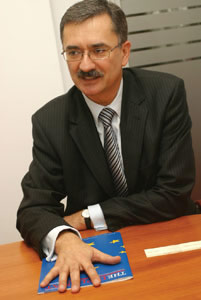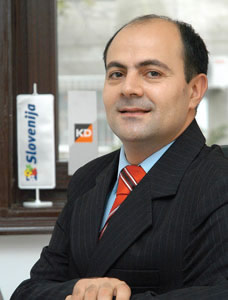2006 Investment Guide |
Gambling on the future
New choices are now available to investors, as Corina Mica takes a look at where individuals can place their money in 2006
This is still a country lacking a strong
middle class and marred by investment
highs and lows.
There are large foreign investments
and increased capital flows on the one
hand, but a history of catastrophes in the
mutual funds market on the other.
Since Communism collapsed over 5.5
million Romanians have lost almost 20
million Euro in all the financial scandals
the nation has suffered.
But now the Bucharest Stock Exchange
is one of the most dynamic in
the central and eastern European region.
The mutual funds market is picking up,
despite huge losses just half a decade
ago. Meanwhile the local real estate
field is still attractive for medium to long
term investments.
However, while the profits are still up
in local stock exchange and real estate
transactions, the return on investment
for bank deposits and foreign currency
has dropped drastically.
But, in Romania, nothing is ever certain.
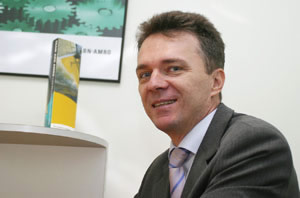 “Whatever the choice of investment is,
there is one golden rule: never invest in
a risky asset more than you are prepared
to lose,” Radu Craciun, senior analyst
with ABN Amro tells The Diplomat.
“Whatever the choice of investment is,
there is one golden rule: never invest in
a risky asset more than you are prepared
to lose,” Radu Craciun, senior analyst
with ABN Amro tells The Diplomat.
But risk comes with reward, according
to Guy Verduystert, head of corporate finance
at KPMG Romania, who says the
country now offers enough choices for
investors between low and high risk.
“Bank deposits would go under low
risk, mutual funds in medium risk,”
Verduystert says, “whereas investing on
the capital market is, in my view, high
risk.”
Diversifying the risk when making
an investment would be the best choice,
he adds. The Bucharest Stock Exchange
is currently a good investment vehicle,
although Verduystert says it is “rather
illiquid”, which means there are not as
large a number of transactions going on
as one might expect.
The BSE is due any time soon to
merge with the local over-the-counter
stock market, the Rasdaq. This partnership
is likely to offer a better portfolio of
stock to invest in.
Riding high
Stocks remain the biggest gamble for the high risk investor, but offer the greatest rewards
Opinions are divided on what is a high
risk investment.
Although the majority of people interviewed
see playing the stock exchange
as the riskiest, some view the real estate
market as highly volatile.
In real estate, land prices have risen
exponentially and the return is not as
high as it was five years ago, says Guy
Verduystert of KPMG.
The property market is driven by the
size of the mortgage market.
“Still, a price of 1,000 Euro per square
metre is still low compared to other European
capitals,” he says. “We may see
a correction in property prices, as what
goes up has to come down. Prices will
peak and then, depending on how severe
the correction will be, we will witness
another burst. With new property developers
coming in, we may see prices going
down to 800 Euro/sqm. If five years
ago investing in property was a low risk
investment, now I would day it’s a medium
risk type of investment.”
However, there is security, argues Alexandru
Nitescu, manager of the Land
Investments Department at Regatta. “The real estate market is one of the
most secure and good fields for investments,
because it follows in close connection
with the development of a country,”
he tells The Diplomat.
Marius Luca, residential sales negotiator
at CB Richard Ellis, says last year
saw an increased interest for plots of
land in Romania, whereas those that focused
on residential properties looked at
new areas, like northern Bucharest.
Luca says the return on buy/rent averages
8.5 per cent, meaning that a profit
could be obtained in 11 or 12 years for
an investment in a property. “But we
have to admit that, until the investment
becomes profitable, it is a constant
source of income, as the property can be
rented,” he says.
EXPAND INTO LAND
The main trend now is to look for land
plots.
“Real estate agents are flooded with
requests for plots of land around Bucharest,”
says Luca. “This type of investments
also offers more opportunities.
The market for residential buildings is
quite unbalanced, so the tendency is to
invest in land.”
With security coming first, Luca says
the best choice for a private investor
would be to mix their interests, namely
to invest in more instruments, like the
stock exchange, real estate properties
and mutual funds.
However, investments in real estate
are only safe until a bigger and more
appealing building pops up next to the
property one has just bought.
“There is a bigger return if one first
builds and then sells (25-40 per cent) or
buys and sells (up to ten per cent),” Luca
adds.
Banks also see opportunities in real
estate.
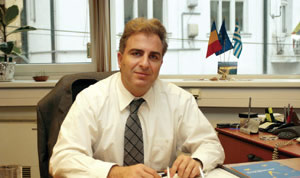 “We have seen good money made in
the real estate field, and it is only logical
that the uptrend will continue,” says
Stylianos Sofianos, president of Egnatia
Bank Romania. “In real estate it is
important what type of investment one
looks for, and next year lots of offers are
expected in this respect.”
“We have seen good money made in
the real estate field, and it is only logical
that the uptrend will continue,” says
Stylianos Sofianos, president of Egnatia
Bank Romania. “In real estate it is
important what type of investment one
looks for, and next year lots of offers are
expected in this respect.”
But he adds that, if Bucharest becomes
overpopulated, there will be
more demand for mortgage loans and
here banks will have a greater stake in
what happens.
“One should get a good return on one’s
money, especially considering the good
development of the stock exchange and
the continuous uptrend, which will continue
over the coming years,” he says.
ROARING TRADE
One element missing from the local
banking and financial market, Verduystert
says, is online brokering. “When
and if major banks will launch such a
product, that will stimulate stocks trading
in Romania,” he adds.
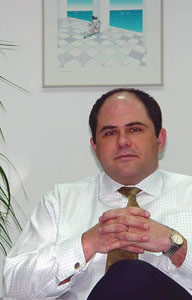 Steps are starting to be taken in this respect. Sergiu Oprescu, executive vice
president of Alpha Bank Romania, will
be implementing this type of service in
the brokering company Alpha Finance,
in 2006.
Steps are starting to be taken in this respect. Sergiu Oprescu, executive vice
president of Alpha Bank Romania, will
be implementing this type of service in
the brokering company Alpha Finance,
in 2006.
ABN Amro’s Craciun thinks the
stock exchange is mainly a speculative
market and very risky. “With the Bucharest
Stock Exchange merging with
[the over-the-counter market] Rasdaq,
bigger companies will be listed, such as
the likes of BCR and Romtelecom,” he
says. “It’s best to have a few large companies
traded rather than lots of small
ones. The capital markets need to be
regulated, as foreign investors will look
at liquid shares, and a key will be a large
free float. Also, there are perception
problems with regards to mutual funds
and the stock exchange.”
There do seem to be captivating investment
opportunities at the Bucharest
Stock Exchange.
“A major advantage of this type of investment
is the fact that one can create
a strategy for any amount of money, be
that 10,000 or 500,000 Euro, keeping the
same portfolio structure but increasing
the values based on the available amount
of money,” Razvan Pasol, president of
fund managers Intercapital Invest, tells
The Diplomat.
Investing on the capital markets brings
along a high risk, but financial theory
means this risk can be diversified.
“There would be a very high risk if the
capital markets industry was volatile,”
says Daniel Palita, associate director at
Alpha Finance. “Investments on a very
long term are more risky, depending on
the rate at which the economy develops.
If somebody needs the money in one or
two months, this is safer, as the volatility
is quite low, but in the end it all depends
on the client’s profile, who should consider
on what term they want to invest
in.”
Palita also says the instruments are
limited by the legislation.
|
Romanian brokers can also invest their clients’ money on foreign markets, says Pasol. He feels the local capital market offers now, and in two to three years, more interesting opportunities than many foreign markets.
The local stock exchange has doubled in 2004 over 2003.
“An investor must differentiate between a good company and a good investment,” says Palita. “A good company posts a year-on-year growth in sales, profits, cash flow, and its investment policy confers with its strategy. A good investment does not necessarily mean the same thing.”
To counteract the risks a diverse portfolio is essential.
Pasol also argues that, for a continuous reduction of risks, one can recommend adding bonds, diversified investment funds or fixed-income instruments to a portfolio.
But Andreea Crainic, commercial risk evaluation expert with Coface Romania says a good investment decision needs a thorough observation of the market over a longer period of time.
“Once a decision to invest on the stock exchange is taken, the investment should stretch at least over two to three years for the return to make a difference,” she says. “In the next two years the stock exchange will grow significantly, following the models of the stock exchanges in the countries that joined the EU in 2004, with an average increase of 50 per cent per year.”
Happy medium
Shaking off their status as a by-word for bankruptcy in Romania, mutual funds are making a resurgence for the medium risk investor
|
A form of collective
investment managed by
a company or a bank,
mutual funds have had a
nasty past in Romania.
At the beginning of the
1990s, the country was
more enthusiastic in developing
mutual funds
than the legislative framework
to check their progress.
So, after numerous
bankruptcies, in 1996,
a new regulatory body,
the National Securities
Commission (CNVM)
introduced rules to assess
the value for investment
funds. The largest
of these, the then threeyear
old SAFI/FMOA,
suffered a massive correction
in its value and
failed to come close to
the new regulations. The
funds froze and its value
dropped, leading to huge
losses for over 100,000
people.
But the pain did not
stop there.
In 2000, 8,000 billion
lei (around 400 million
Euro) ‘disappeared’ when
the National Investment
Fund (FNI) self-destructed.
This scandal led to the arrest of the
president of the CNVM.
Marred by such examples, the local investment
funds market still lags behind
more established central and eastern
European ones, according to US-based
Investment Company Institute (ICI).
The Romanian mutual fund market
is 72 times smaller than in Hungary, 60
times smaller than in the Czech Republic
and 34 times smaller than in Slovakia,
says ICI.
Still, despite a scandalous past, the
market is now becoming more interesting.
“This industry has not managed yet
to shake off its ghosts,” says Craciun. “People are still afraid and the total value
of the market, although on the rise, is
low compared to other markets. And we
have to admit that the mutual funds market
has a limited range of instruments.”
SLEEPING GIANT
Sergiu Oprescu, Alpha Bank Romania,
adds that as interest rates come
down, a window of opportunity is starting
to appear for this investment segment.
And as open-end funds begin to
perform better, more investors will be
attracted to such instruments
Fund managers confirm the rising
trends.
“At this point, investment funds are
the most recommended investment instruments,
as the risk is close to zero,”
Eugen Voicu, president of Certinvest,
tells The Diplomat.
“This is a sector which balances investments
on the capital market. In turn
it is dynamic and offers a good return.
There is no risk right now on the Romanian
market and frauds are hard to put
into practice.”
|
“This country is an emerging market and is kind of ‘sleepy’ on the mutual funds side,” he says. “There are statistics showing that the average investment in Europe is between 300 and 700 Euro per inhabitant, whereas in Romania this only amounts to three to five Euro per inhabitant.”
The ‘leaders’ in Europe are countries like Ireland, Luxembourg, Austria and France, where an inhabitant invests up to 12,000 Euro on average. But quality information about the benefits of mutual funds is not always available, says Voicu.
“The aftershock resulting from the infamous SAFI and FNI examples is still present, to a great extent, unfortunately,” he says. “It is hard to predict when the investment funds market in Romania will explode, but they are on the right track.”
In the meantime, many factors influence the Romanian market.
KD Investments has seen an evolution from fixed-incomes instruments (like bank deposits), to more liquid and dynamic instruments, like shares on the stock exchange.
“There is no risk whatsoever attached to investment funds at this point in Romania, as this market is overregulated,” says Mincu-Radulescu.
The market is in line with the appetite for risk an investor has. If one wants to aim for large and fast returns, one has to assume more risk of loss.
Open funds dominate the Romanian market. Closed funds, which attract more money, are used more by institutional investors with special interests, such as companies.
Certinvest now administrates four such investment funds and a fifth one, a closed fund in real estate, is on its way.
|
KD Investments works with HVB as a depository bank, while the financial auditor is PriceWaterhouseCoopers. “We work with both of them in all central and eastern Europe and New Europe countries,” says Mincu-Radulescu.
Now KD Investments manages KD Maximus, which at the end of the year posted net assets of three million Euro and managed to attract 970 investors, beating its target of two million Euro in net assets. The second fund, KD Optimus, is in the process of being authorised by the regulatory body, CNVM.
This will invest about 20 per cent on the stock exchange, says Mincu-Radulescu, in very liquid companies from the top category and 80 per cent in lowrisk instruments, such as bank deposits and bonds.
Both managers say there are funds locally that bring a return in the range of 30 to 40 per cent on average.
BANKS ARE READY
Banks have their own opinion on asset
management and private investments.
“We recommend our clients invest
in recognised investments vehicles, on
the OPCVM market [in companies that
operate collective investments in securities],”
says Dan Nicu, general manager of
SG Asset Management BRD. “An investor
can put in amounts that can be lower
than 10,000 Euro or larger than 500,000
Euro. The question about the choice in
investment instruments is related more
to an investor’s profile, his tolerance for
risk and his expectations, more than to
the amount he wants to invest.”
Radu Hanga, head of Capital Markets
at Banca Transilvania, says the bank’s
products tackle both the retail market
and the high net-worth individuals segment.
“The products that address the
retail market are mainly the open investment
funds,” he tells The Diplomat.
The two open funds that BT Asset
Management administrates are BT
Maxim and BT Clasic and they are distributed
through the branches network,
targeting small investors, who are looking
at alternative vehicles as opposed to
the classic bank deposits.
BT Maxim is a stock-based investment
fund, mainly dedicated to investments
in shares listed on the BSE. “This
fund will capitalise on the growth potential
of the Romanian market, based on
economic growth and EU integration,”
says Hanga.
On the other hand, BT Clasic is a diversified
fund, mixing monetary placements
with those in capital [a maximum
of 20 per cent of the assets are invested
in listed shares], offering a balance between
the risk involved and the return
obtained.
Hanga says the total assets value of
the two funds administrated by BT Asset
Management, four months after their
launch, is more than 5.5 million Euro.
“In this short timeframe we attained a
market share of six per cent,” he adds.
BT Asset Management also administrates
a closed fund, BT Invest 1, addressing
qualified investors, with a life
span of ten years.
| STRUCTURED DEPOSITS DEBUT ON MARKET |
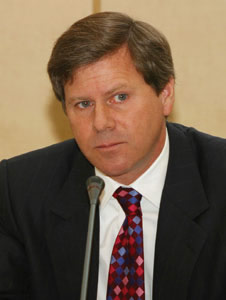 A new medium risk alternative on
the local market is structured deposits,
launched by Raiffeisen Bank Romania,
which are deposits related to
instruments such as exchange rates. A new medium risk alternative on
the local market is structured deposits,
launched by Raiffeisen Bank Romania,
which are deposits related to
instruments such as exchange rates.Structured deposits combine a deposit and an embedded derivative, whose return is dependent on the performance of underlying financial instruments, says Raiffeisen Bank vice president in charge with the Treasury Division, James Stewart. These financial instruments require a minimum of 50,000 Euro for an individual to become a client of Raiffeisen Bank in this segment. What are their advantages? “Structured deposits generally provide the possibility of higher returns compared to fixed deposits,” Stewart says. “At the same time, they are riskier than traditional deposits because their returns are dependent on the performance of the other financial instruments they are tied to.” Raiffeisen launched six such treasury products just last month, under the Diamond brand, and announced it will soon launch other structural deposits, including the interest rate structured ones. |
Lying low
Locking up the cash in a bank remains the safest path for the low risk investor
“If you want zero risk, the recipe
is simple: go open a bank deposit at a
reputable bank or start looking at state
bonds,” says ABN Amro’s senior analyst,
Radu Craciun.
At present the local currency, the leu
(RON), is a safe bet and there is a general
positive trend in bank deposits.
“Our deposits are increasing faster
than the banking system,” says executive
vice president of Alpha Bank Romania
Sergiu Oprescu. “The growth of
all deposits of the bank, equivalent in
Euro, has been almost 43 per cent until
October 2005, compared to December
last year. At the same time, leu deposits
have grown the most during 2005.”
Other useful instruments could be
bank bonds and certificates of deposit,
says Stylianos Sofianos, president and
general manager of Egnatia Bank Romania.
“A bank’s interest rates depend on the
market,” he says. “Now in Romania they
are not as high as before, as the market
is more mature. But the majority of Egnatia
clients prefer deposits in local currency.
Investing your money in this type
of instruments means you don’t want to
block your money for a long time. This
applies for three to six months.”
KEEP LOCAL
But at the same time, bank deposits
cannot give an investor a very high yield. “The majority of clients want to keep
about 40 to 50 per cent of their funds
in liquid assets,” says Sofianos. “At the
same time there is a trend to turn to local
currency, as it offers a higher return as
opposed to deposits in hard currency.”
The president says estimations cannot
be made for the next two years,
but expects a similar situation in 2006,
especially in the private banking field.
Egnatia is thus preparing to launch its
own range of products, including loans
for individuals secured with shares on
the local stock market.
But Craciun says that, in Romania,
bank deposits’ interest can cover the inflation-
depreciation in the best case scenario,
but nothing more.
“One sign is that the pace at which
people chose bank deposits is now quite
slow,” he says. “The interest rates are
low as well.”
Going even further, Andreea Crainic,
commercial risk evaluation expert with
Coface Romania, says having the money
tied up in a bank account is “no longer
the best option,” as bank interests are no
longer that attractive and can be even
worse than before. “There are times
where they are really negative, as they
equal or are under the inflation rate,” she
says.
But some, such as combined deposits,
are very popular, according to the Liliana
Damianov, head of private banking
with HVB Bank Romania. This means
that a client ties up part of his or her cash
for one month and another part for one
week.
But Damianov says a ‘real return’ is
not given by deposits at her bank. “Deposits
are or should be giving merely a
preservation of the money’s real purchase
value and give a limited extra return,”
she says.
Adriana Tudorancea, product management
and development director with
Unicredit Romania says, at present, the
most popular are term deposits, over a
period of one to 12 months, with larger
returns depending on the length of deposit
and quantity of cash.
“But people’s savings tend to focus
on shorter terms, such as one or three
months,” she adds.
GOING LARGE
However, if an investor is looking for
a low risk on a large amount, benefits
can exist.
A client should have a minimum of
100,000 Euro to become a private banking
client of BRD - Groupe Societe
Generale, says Dana Bajescu, group
Dorobanti director at the bank.
“For higher amounts, one can request
more sophisticated banking services,”
she adds. “If we’re talking about private
investments of several hundred thousands
of Euro, our clients can access
services offered by Societe Generale in
Luxembourg, Geneva or Zurich, where
they can benefit from financial instruments
that cannot be created in Romania
due to legislation and restrictions.”
Tudorancea says that at Unicredit, when a client disposes a large amount
(over 100,000 Euro) and does not want
to deposit them on long terms, a personal
banker can ask the Treasury Department
to negotiate a better interest.
| INSURING RETURNS |
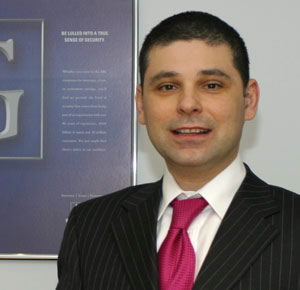 Insurance policies are more of a
savings instrument than an investment
one, says AIG Life general
manager Theodor Alexandrescu. Insurance policies are more of a
savings instrument than an investment
one, says AIG Life general
manager Theodor Alexandrescu.“When taking up such an instrument, one should consider three components: the yield, the liquidity and the risk attached,” he tells The Diplomat. “Regardless of the type of insurance product an individual chooses, this offers a low risk for a long period of time, and covers all three main risks one can encounter during their lives: that of dying, that of becoming handicapped or that of living too long.” The general manager does not see insurance policies as a form of getting high returns, but of compensating for losses. “A life insurance policy is signed for a minimum of ten years and can get to a maximum of 47 years, guaranteeing a yield of between three per cent (the average on the Romanian market) and five per cent (AIG’s case),” Alexandrescu adds. He says the local insurance market has a value of about 240 million Euro, which is “quite small” compared to neighbouring countries. “Romanians lack the education and the competencies in this respect, and for this reason the market and the legislative framework has developed at a slower pace,” he adds. |
Rate of the art
Looking to invest in culture? Anca Pol puts you in the picture
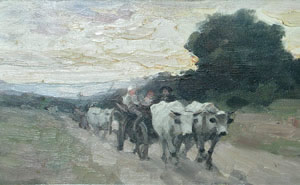 The Romanian art market is growing
in a similar fashion to other mature
countries, but slowly.
The Romanian art market is growing
in a similar fashion to other mature
countries, but slowly.
Like elsewhere, visionaries will say
bet on the contemporary, while the more
conservative specialists urge investors
to go with the classics.
But if the superior market of New
York is focused on mainly contemporary
work, buyers in Romania are still
reluctant to invest in fresh names. What
investors seek at the moment is quality
that has been appraised and re-appraised
through successive sales over the last
century.
This includes the paintings of the
Romanian masters of the 19th century,
such as Grigorescu, Tonitza, Andreescu,
Aman, Iser and Luchian, who one can
always count on when seeking for value
and return.
“The paintings of the great masters
sell the best, here and in any other country,”
says Mihai Papagheorghiu, director
of the Alis Auction House.
Despite its population’s often limited
financial muscle, Romania has always
had a buying elite with an eye for quality.
“Some have just the interest, but not
the taste,” Papagheorgiu says. “Others
regard art acquisitions as a mere investment,
but I think that sooner or later they
also grow sentimentally attached to art,
because you cannot buy a painting in the
same way you purchase shares on the
stock exchange.”
Information on the value of an artist is
important. But in this market there are
no Bloomberg updates. If one lacks education
in the field and experience with
the art market, one needs an adviser, a
specialist who knows the market from
the inside, such as appraisers in art galleries,
auction houses or antique shops.
WATCH FOR FAKES
But it is very rare to have friends in
the art commerce, so it is easy to get
fooled and the risk of buying a fake is
quite high, according to one expert.
“We are only at the tip of the iceberg
in the art market,” Papagheorghiu says.
There are too few authorized art sellers,
such as auction houses and art galleries,
and most of the best deals seem to take
place on the black market.
Meanwhile in the capital’s auction
market the main players are Alis and
Monavissa, owned by artist Alexandru
Ghildus.
Three years ago Alis sold its most expensive
painting, ‘Girl lying in the grass’
by the romantic Nicolae Grigorescu, for
59,900 Euro. The auction house’s ten
most expensive paintings include eight
Grigorescus. Ion Andreescu and Nicolae
Tonitza also sell well.
Seemingly, it is almost exclusively
Romanians that buy such classics. Foreign
diplomats based in Bucharest seem
to prefer the acquisition of antiques,
such as beautiful porcelain and silver
objects, which can be a valuable pick if
one avoids a lot of kitsch.
Nevertheless there are a limited number
of classics. “We can notice a decrease
in the quality of the offer in classical art
works on sale at present,” Papagheorhiu
says. “What was first class was sold first.
What was second class is now sold as
first class and so on.”
No auction houses sell contemporary
work at present. They are available either
directly from the artists or from the
few contemporary art galleries.
There are around nine contemporary
art galleries in Romania, most of which
sell the works they exhibit. According to
Matei Caltia, the manager of Galeria Posibila,
around 30 contemporary art galleries
might be opened by 2010 in Bucharest.
Some of these are trend-setters,
others are just shops.
At H’art gallery, its director Dan
Popescu says the field offers investors
another financial opportunity - that of
one day opening their own contemporary
art gallery.
The initial investment in the opening
of an art gallery is, according to Popescu,
around 100,000 Euro. With this
amount, one could break even in six to
seven years.
“In ten years, contemporary art will
surpass, in value and in profit, classical
and modern art,” he says.
Auction houses may then begin to sell
such material in four to five years. But in
order to become more attractive, the Romanian
art market has to become more
transparent and the waters are muddy at
present.
Like any insecure investment, one
could step on quicksand if one does not
know who to gamble on.
“Some choose to bet on a whole generation
of seven to ten artists, because
thus there is a chance that at least one
will become so valuable the he will cover
the whole expense,” Caltia says.
Dan Popescu rates contemporary artists,
many of whom he has exhibited,
such as Dumitru Gorzo, Alexandra
Croitoru, Suzana Dan, Roman Tolici,
Gili Mocanu and Vlad Nanca.
Attending art openings, asking in galleries
and gauging the climate can contribute
towards an educated opinion.
Popescu says the notion that an artist
has to be dead before becoming valuable
is no longer in force and that the works
of the above artists could double or treble
their value in less than five years.
But one has to be careful - no one
wants to be left with last year’s fashion
mistakes.
I find myself with a lot of money What can I do with it?
Local investment specialists, quizzed by The Diplomat, reply to where they would invest large amounts of cash
Ion Mincu-Radulescu, CEO, KD
Investments Romania says if he had
money:
• two to three per cent would go into
a bank
• 40 per cent in open funds
• 40 per cent on the stock exchange
• around 20 per cent looking at land
options and houses
Razvan Pasol, president of Intercapital
Invest: “For a medium risk appetite
over a longer period of time, I would
divide the amount as follows:
• 35 per cent in SIF Oltenia shares
• 25 per cent in BRD stock
• 25 per cent in Petrom shares
• “And a more risky component: 15
per cent in Broker Cluj stock.”
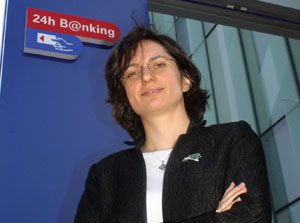 Liliana Damianov,
Head of private banking HVB Bank
Romania, says that one of her bank’s
portfolios for her clients advises the
following:
Liliana Damianov,
Head of private banking HVB Bank
Romania, says that one of her bank’s
portfolios for her clients advises the
following:
• 70 per cent investments in bonds
• 20 per cent in equity
• ten per cent in a deposit
“I have 500,000 Euro going spare, what should I do with it?”
Irina Albu, Colliers International
“I could buy a luxury apartment in a
new building in northern Bucharest
or an apartment in one of the capital’s
old villas or even a large villa, with a
garden and a swimming pool in Baneasa-
Pipera, Snagov or Corbeanca.”
Guy Verduystert, head of corporate
finance, KPMG Romania
“With that money I’d play on the international
stock markets, as limitations
are literally disappearing.”
Ionut Bordei, Eurisko residential for sale department manager “Investing in apartments in the city. A recommendation for investors is to buy the apartment in its project phase it is cheaper and you get the chance to choose your own interior finishing. This type of investment is recommended both for reselling after a certain period, and for renting.”
Marius Luca, residential sales negotiator,
CB Richard Ellis
“Definitely I would buy an apartment
in Washington Residence in Dorobanti.”
Andreea Crainic, commercial risk
evaluation expert with Coface Romania
“Investing in real estate amounts that
are close to 500,000 Euro can be a
valuable solution, especially when
one acquires more apartments in a
central area, modernising them and
renting them on a daily basis. Also
buying real estate in areas of high
development potential. With 500,000
Euro and depending on one’s professional
training, starting a larger business
can be more appealing. The recommended
fields are constructions,
design and manufacturing of installations
(thermal, electric and sanitary),
because, despite the fact that these
fields of activities are quite risky right
now in Romania and, in the future,
one will see a lot of construction work
going on.”
Eugen Voicu of investment managing
company Certinvest would split
500,000 Euro as follows:
“• 100,000 Euro: down payment on 33
per cent of a new house
• 100,000 Euro: an investment in a
real estate fund and collateral for the
mortgage loan
• 100,000 Euro: investments in a
stock fund. This would also give solid
ground to support the mortgage loan
as well as bringing good benefits from
the increase of the funds’ return.
• 100,000 Euro: I would start a new
business in the service field
• 50,000 Euro: Investments in education
for the family, in schools and
training
• 50,000 Euro: This would be ‘travel’
money to visit as many countries as
possible, including parts of Romania.”
“I have 100,000 Euro going spare, what should I do with it?”
Irina Albu, Colliers International
“For between 50,000 to 100,000 Euro,
I would recommend the purchase
of an apartment in a new residential
area, under construction or planned to
be constructed soon.”
Marius Luca, CB Richard Ellis
“One could look at plots of lands,
worth at least 50,000 Euro.”
Radu Craciun, ABN Amro
“One can look at investments in the
real estate field, but the truth is that
all money would be swallowed by
such an investment. A return could be
reached through buy and rent.”
Ionut Bordei, Eurisko
“One could buy a quality apartment in
central or northern Bucharest, or even
a villa.”
Andreea Crainic, Coface Romania
“For amounts between 50,000 and
100,000 Euro starting up a business,
preferably a family business. Nevertheless,
it depends on the profile and
the training of a given person. The
stock market is also an option. Unfortunately,
Romania does not see that
many common people playing the
stock exchange. This does not mean
that the stock exchange does not offer
appealing returns, but that a certain
economic training and more information
of the market are needed. With
100,000 Euro one can buy a franchise
from a successful business, and make
the difference through an inspired
idea.”
100,000 Euro in a
mutual fund or on
the stock exchange:
Guy Verduystert,
KPMG Romania
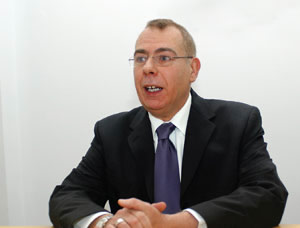 Alexandru Nitescu, manager of the
Land Investments Department, Regatta
Alexandru Nitescu, manager of the
Land Investments Department, Regatta
“One can buy an apartment in a more
central area of Bucharest.”
Guy Verduystert, KPMG Romania
“I’d either put it in a mutual fund or
invest it on the stock exchange.”
“I have 10,000 Euro, what should I do with it?”
Andreea Crainic, Coface Romania
“One does not have that many options.
Still, if the investment decision
does not include buying a car, modernising
the apartment or using it as
a down payment for the purchase of
an apartment, one can start a small
business. Young, ambitious and welltrained
people can use 10,000 Euro
as a start-up amount. It can tackle
the software field, the promotion activities
sector, website development,
leaflets, business cards and other marketing-
related activities. The return
on investment will only depend on
the inventiveness and entrepreneurial
spirit of the young investor, and can
bring profits ranging from 20 to 100
per cent of the invested capital.”
Alexandru Nitescu, Regatta
“One could buy a hectare of arable
land 30 to 40 kilometres away from
Bucharest, but not in the northern
area. One could also buy a plot of land
in the countryside, near Craiova for
example.”
Radu Craciun,
ABN Amro
“The average Romanian does not have
a high appetite for risk, so for this
amount I would not recommend playing
the stock markets. The best decision
would be a mix between bank
deposits in RON or a foreign currency
and investment in a mutual fund that
would help cover the risk.”
Marius Luca, CB Richard Ellis
“Part on the stock exchange and part
in mutual funds.”

